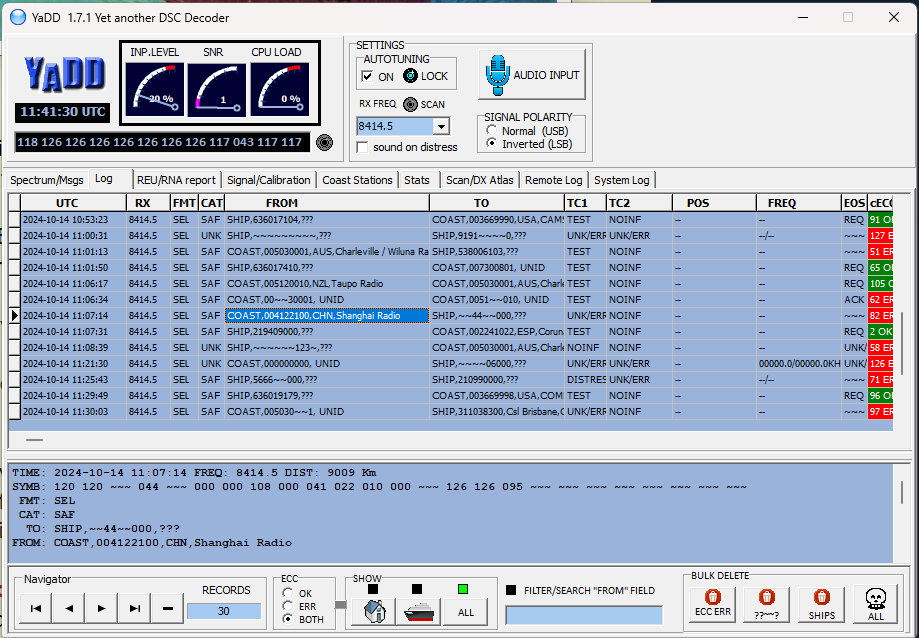Many thanks to SWLing Post contributor, Bill Meara who shares the following article from the excellent SolderSmoke Podcast blog:
Monitoring Maritime Radio Messages with YADD
 This is really cool and very easy. Easy nerd thrills.
This is really cool and very easy. Easy nerd thrills.
On Friday, Steve VE7SL, put up a blog post on how we can relive the glories of our youth by monitoring HF long-distance maritime traffic. In the old days the ships were on CW and many report that it was great fun to listen to the various “fists” in action from coastal stations, and from ships on the high seas. While the CW is long gone, this maritime traffic is still on the air. Today they are using a SEL call system called Digital Selective Calling or DSC.
Happily, it is very easy to decode these transmissions. Steve recommends a program called YADD (Yet Another DSC Decoder). I downloaded it in seconds and had it installed on my computer in minutes. Next I had to find a general coverage receiver. I thought about pressing my old HQ-100 into service, or maybe even the S-38E, but a cooler head prevailed. I remembered that Farhan had given us a general coverage receiver in his uBITX transceiver. So it came off the shelf and got powered up. Around dawn on October 14, 2024 I put the receiver on 8.415 MHz LSB. I didn’t even have to do a real connection to the computer — I just put the speaker close to the mic and that was sufficient.
Boom. Soon I was getting signals from ships afloat and from coastal stations. I heard Shanghai, New Zealand, and Australia. See above. From the U.S., I heard Miami, but the most emotional for me was hearing the station at Pt. Reyes, in California. This is the station that Dick Dilman W6AWO has volunteered at for many years. FB.
Back in 2017, Steve had another post on DSC and YADD:
https://ve7sl.blogspot.com/2017/08/yadd.html
Thanks Steve!
This site explains very well what DSC is. From this I think we can see that there is nothing illegal about using YADD to monitor the DSC alerts (that are all emergency-related): https://infoshipping.tripod.com/gmdss_dsc.html

